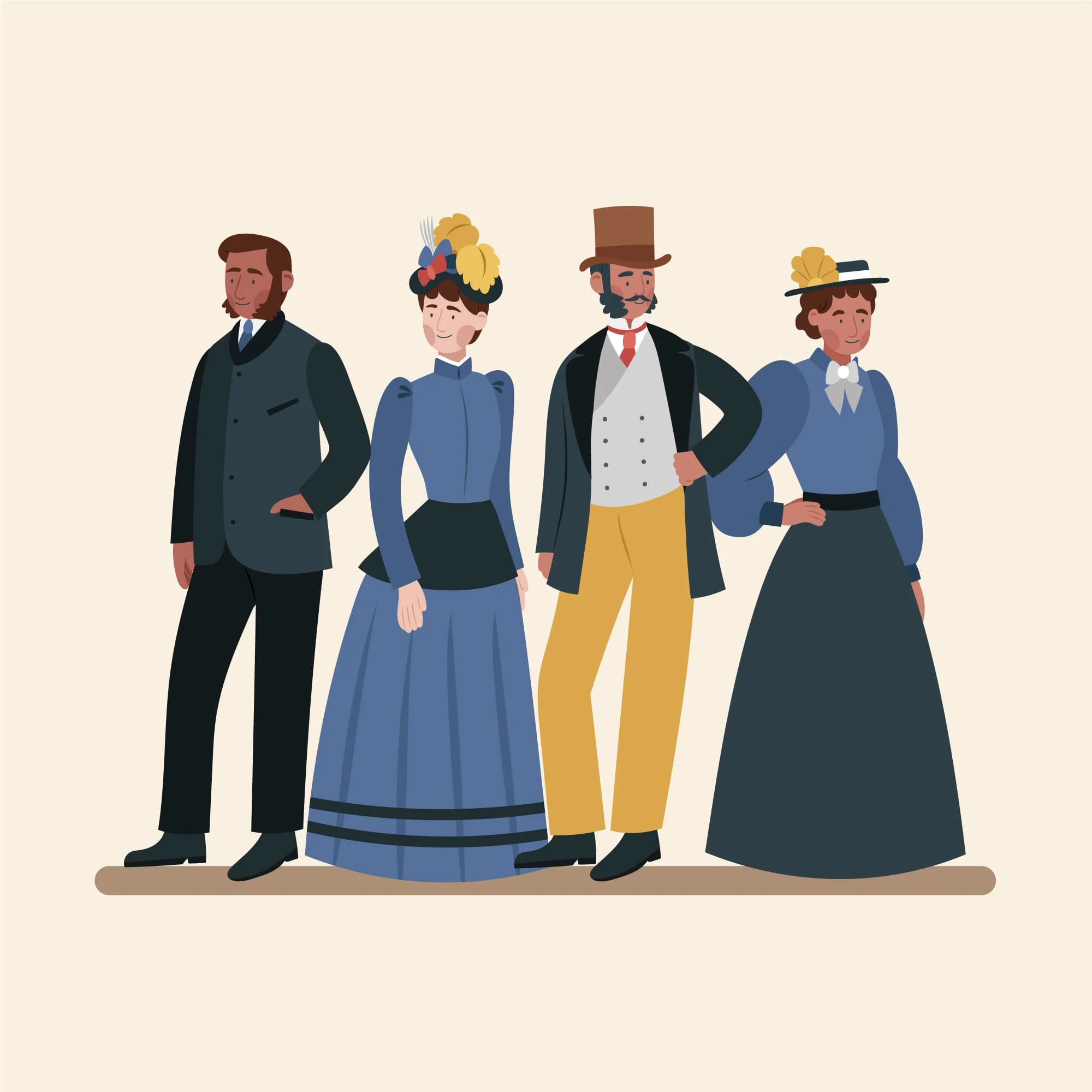- Your cart is empty
- Continue Shopping
19th Century Clothing Style in England

England’s 19th century clothing style was a time of big changes, and one of those changes was how people dressed. Clothes weren’t just about covering up; they were a way to show off your style and status.
Evolution of Fashion Trends
How do we have trends that come and go? Well, back then, it was the same deal. But what kicked things into high gear was the Industrial Revolution. Suddenly, machines made fabric faster than ever, which meant more variety in what people could wear.
Popular 19th Century Clothing Styles
First up, we’ve got the Regency era. Think Jane Austen novels—empire waistlines, flowy skirts, and delicate fabrics like muslin and silk. Then there’s the Victorian era, with its fancy ball gowns and tailored suits. It was all about looking proper and polished.
Fabrics and Materials
Silk, cotton, and wool were the go-to fabrics of the time. Silk was super luxurious, cotton was practical for everyday wear, and wool kept you warm in the chilly English weather. And let’s not forget about lace and embroidery—those little details that made clothes extra special.
Accessories and Adornments
Every outfit was complete with accessories! Ladies wore hats and bonnets adorned with ribbons and feathers, while men sported snazzy gloves and handkerchiefs. It was all about adding that finishing touch to your look.
Gender-specific Attire
Women’s 19th century clothing style was all about highlighting their femaleness, with corsets and graceful skirts. Temporarily, men shocked tailored outfits and cravats, looking elegant as forever.
Dress Codes and Etiquette
Formal occasions called for some serious dress-up time. Ladies donned elaborate evening gowns, while gentlemen suited up in tailcoats and top hats. And even for everyday wear, there were rules to follow to make sure you looked respectable.
Influential Fashion Icons
Queen Victoria herself set the tone for fashion during her reign. And then there was Beau Brummell, the ultimate dandy who knew how to dress to impress.
Impact of Global Trade
Thanks to global trade, England was introduced to fabrics and motifs from all over the world. Asian influences, like Chinese silks and Indian textiles, added some exotic flair to English wardrobes.
End of the Century Transitions
As the 19th century clothing style drew to a close, fashion took a turn towards the artistic. Art Nouveau-inspired designs brought softer silhouettes and nature-inspired patterns to the forefront.
Legacy and Revival
Even today, we still see suggestions of 19th-century clothing style. From vintage-inspired dresses to period dramas on TV, the styles of the previous continue to inspire us.
Conclusion
The 19th century clothing style was a period of unbelievable change in fashion, with England’s important method in setting trends that would shape generations to come.



